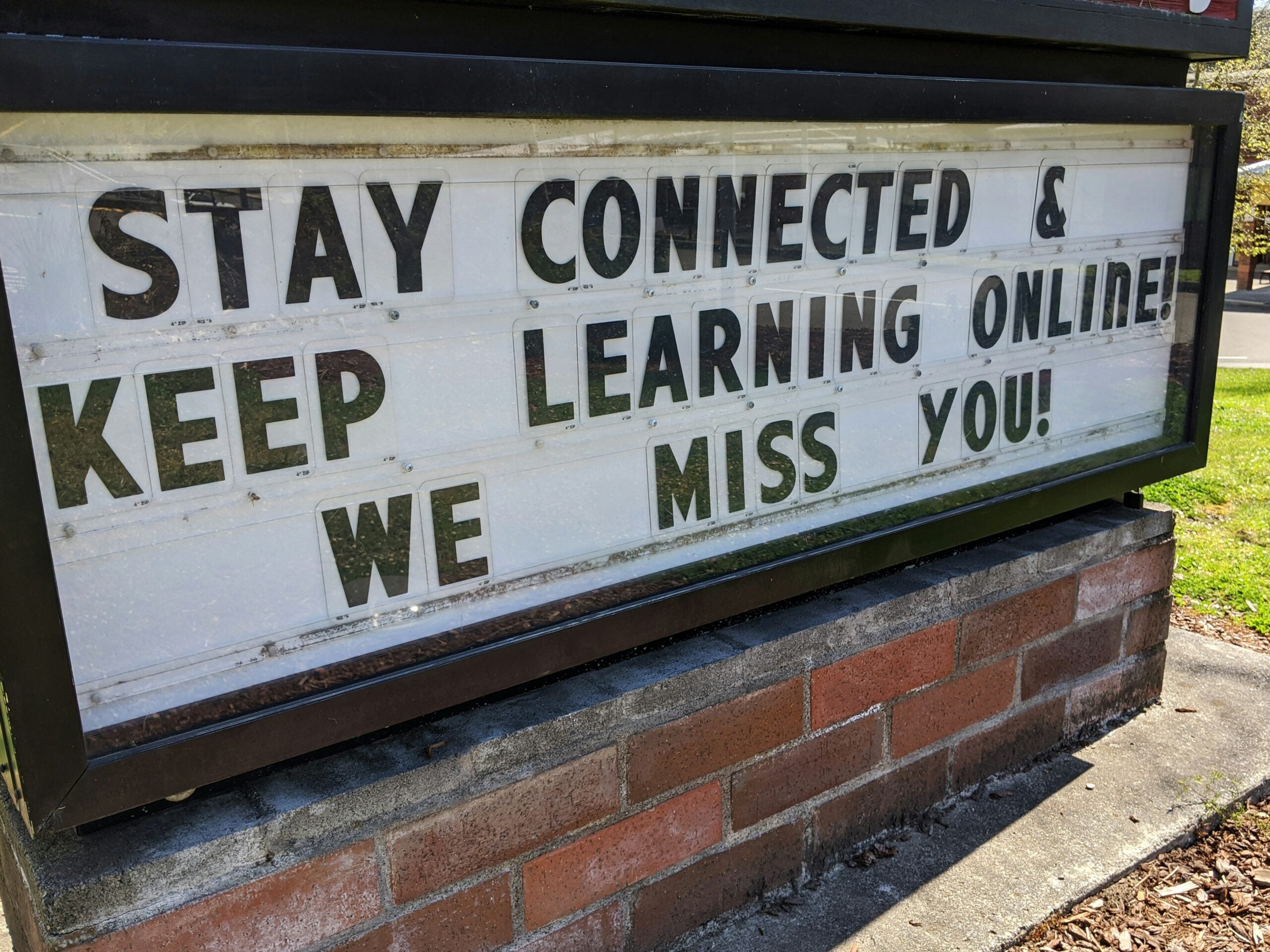How four LA teachers came up with strategies to keep their students engaged and supported while their own lives were upended.
On March 13, 2020, schools across Los Angeles shut down to protect the health of students and their families, as well as educators and the larger community in the beginning of what was then a little-understood but rapidly escalating coronavirus pandemic.
Teachers and students had little notice, with some only getting word that morning that students would be sent home and that campuses would close at the end of the day. Campuses may have been closed, but school was still in session. Teaching and learning continued, albeit remotely.
Teachers and schools struggled at times to find and engage students; providing access to technology devices and internet service was a difficult challenge for many students and their families, especially in the first weeks after campuses shuttered. Teachers had to make changes in how they teach and to quickly learn new skills.
To better understand the impact the pandemic has had on schools in Los Angeles, several teachers affiliated with UCLA shared their experiences in a series of interviews with the UCLA School of Education and Information Studies.
We learned about the chaotic first days when buildings closed. They talked about the fears of their students and navigating through their own roller coaster of emotions. There were struggles to reconnect with students on screens and the difficulties that their students and sometimes, they, as teachers, had in accessing technology and the internet service needed to engage in instruction.
There are stories of not being able to find students, of students who could not access the internet, and those who refused to turn on their cameras. They talked about their own lack of confidence and the mounting stress and impact of the virus on their students and families. These teachers talked about their own isolation—of teaching all day in a bedroom or dining room or kitchen, and then having to make dinner, with little separation between home and work.
But things are not all grim. They also shared, enthusiastically, their successes, the progress they have made over the course of the school year, and their commitment to teaching and their students, despite the pandemic. And they make it clear, that even in a global crisis, children are learning.
“The Kids Are Still Learning”
Jacqueline Belloso, UCLA Community School
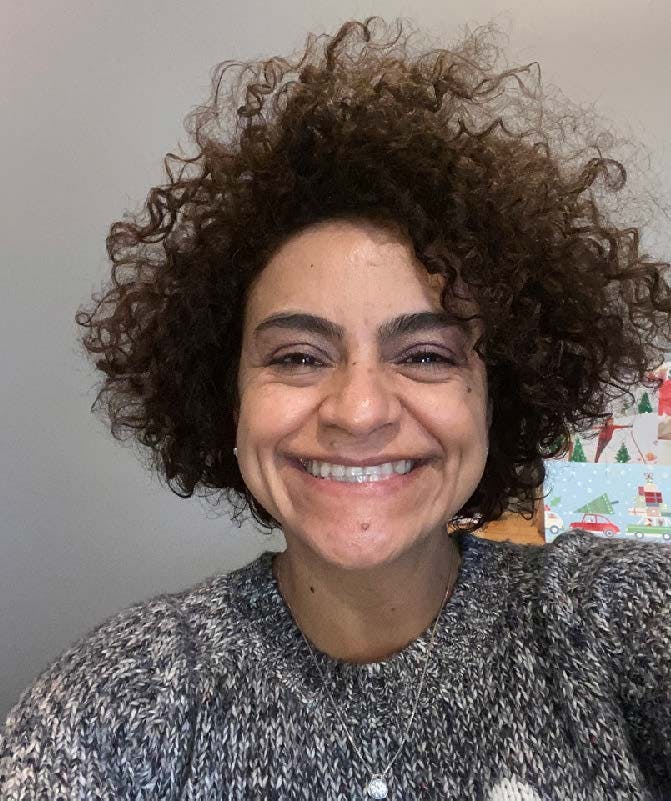
If there is one thing Jacqueline Belloso wants people to understand about education during the pandemic, it is that school is still happening.
“[Our] schools did not close, buildings closed,” she says. “But teaching and learning is happening. It may be happening in a way we are not used to, but kids are learning.”
Belloso teaches fourth and fifth grade students together in what she calls a “den” at the UCLA Community School at the Robert F. Kennedy campus in the Koreatown neighborhood of Los Angeles. She admits that it has not been easy.
The vast majority of her students are Latinx and come from families with low incomes. Many have been exposed to trauma. But they are not defined by those things. They bring a rich culture of backgrounds from Mexico and Central America, and range of traditions, knowledge and assets.
“Our students come with a lot of curiosity. There is something very special about our school and the population we serve,” Belloso said.
Belloso has always built strong relationships with her students, a product of being their primary instructor for two years, for fourth and fifth grades. The community school model also focuses on engaging families, and Belloso had just had parent conferences when the campuses were closed, so she felt connected with her students. Still the first two weeks were a bit of a blur learning how to teach online, with most of her focus on just getting students the technology they needed and supporting their emotional needs. The move to online instruction was “a huge shift,” says Belloso.
“In our school, we do a lot of differentiation. I teach fourth grade, but if you come to my class and exhibit sixth-grade reading skills, I’m going to support you where you are. Or you might come into my classroom with second-grade reading skills. Well, I’m going to support you and do small group instruction with you at that level. Early last spring, that rug got swept right out from under me. That was hard, it affected my heart and mind to not be able to do that.” She found herself pivoting, finding them busy work to keep them occupied.
“That’s not something I normally do in my classroom. So morally and conscientiously, I was impacted and I’m sure it had an impact on the students because it was a different way of instruction.”
The campuses were still closed when the school year drew to an end.
Belloso met over the summer with her grade-level team to prepare for how they were going to teach when school resumed in the fall. They met every week for six weeks and developed a unit of study based on identity. It also included digital citizenship so that the continuity of respect for peers and instructors was maintained in an online setting. They made specific plans for how they were going to teach and what they were going to cover. They also made plans to meet with parents to explain their methodology.
“We had a really clear set of the lessons that told us this is exactly what we are going to do, so, when the school year started, we had a roadmap of what we were going to teach and what we were going to cover as we got to know the students. That was really helpful.”
The resumption of school in late August brought new challenges, not the least of which was teaching students online that she and her colleagues had never met in person.
Belloso says that she had 14 new students.
“I was very concerned about how we could build community. How do we connect with students? How do we connect their families?”
Her school took a multi-tiered approach to address this issue. “We had parent conferences. I called and introduced myself to the parents the week before school started and then scheduled one-on-one conferences with all families. I met with them and talked with them, saying ‘Here I am. Who are you? Tell me about your child. What do you have at home to be successful? What don’t you have?”
By Spring and with the 2020–21 school year still online, Belloso makes clear that she believes her students are learning.
“I really want to challenge that narrative that children are not learning. They may be learning in a different way, but it is happening.”
She emphasizes the need to address the social emotional needs of the students and be aware of increased stress as the year has gone by.
“It’s been a real roller coaster. There are some highs and some lows. When it’s high, the kids are present and they’re participating. When it’s low, I’ve seen students refuse to turn the camera on, even after it’s been requested.”
She’s also seen how some students, who normally are engaged, have suddenly become disengaged. Some parents have shared that their children experienced loneliness. “I see it sometimes with those that do keep the camera on,” Belloso says. “I’ve had to bring in our psychiatric social worker just to do circles or talk with them.”
Belloso and other teachers at the school have also had to respond to students and families who have lost jobs or been economically impacted by the virus, as well as those who have become ill or lost family members.
The stress has been very real for teachers and a key to getting through the year for Belloso has been the support of her colleagues. Her team has continued to meet weekly throughout the year to talk and plan and offer support.
“Just to be able to connect with other people during the pandemic, I mean, that alone has been super helpful. It’s also helped spiritually, too, to deal and share and talk about the good, bad, and the ugly that this has been and not be judged.”
“This [pandemic] has been really emotionally draining, and that camaraderie has been a way to keep us sane and keep us laughing and keeping us moving forward and making sure that we’re not burning out.”
“To me, it’s been a lifesaver.”
“I’ve Learned So Much Because Of This”
Maria Ortega, Florence Griffith Joyner Elementary School
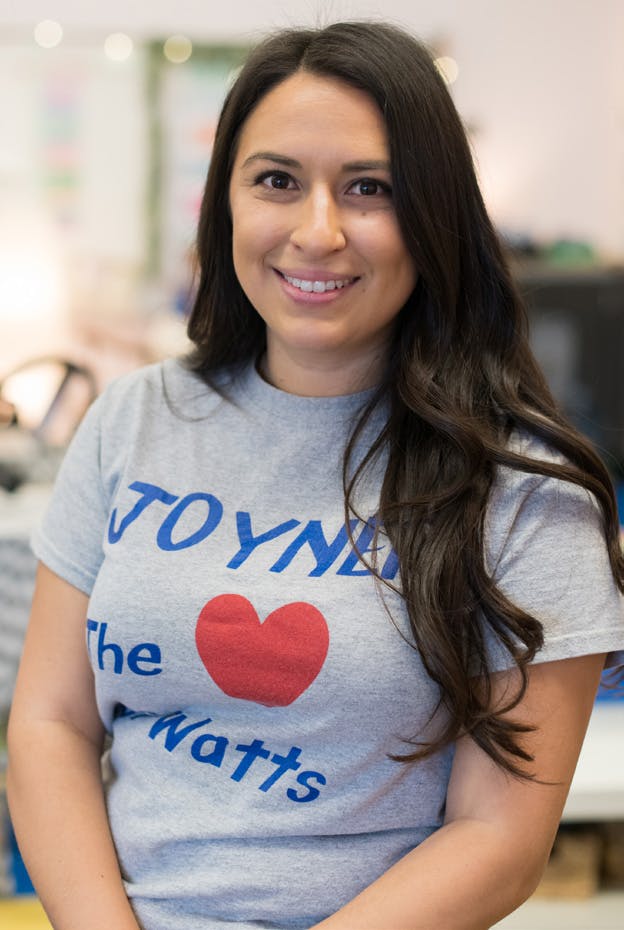
Maria Ortega is a graduate of the UCLA Teacher Education Program. She began her teaching career five years ago at Florence Griffith Joyner Elementary School in South Los Angeles.
When COVID forced her school to close she vividly remembers how she could not even hug her students good- bye, out of fears of spreading the virus. “It was just ‘knuckles’ or ‘elbows,’ and, ‘I’ll see you in two weeks.’ I was emotionally overwhelmed,” she said, choking back tears.
Schools closed on a Friday, and by the next week, Ortega was already on Zoom with some of her kids. The school, with assistance from her principal and in collaboration with Partnership for LA Schools, provided her students the necessary equipment—Chromebooks, hot spots and iPads—to help them to access the internet and the classroom.
Despite those early efforts Ortega and other teachers struggled to connect with their kids.
“I had 24 students and I think I was able to regularly communicate with 16 of them. There were some that we weren’t even able to get through to by phone. We were still doing home visits at the time. There was a lot happening for lots of families. We had a lot of families that just left.”
For the first few months Ortega said she was focused on trying to build a sense of normalcy for the kids. She
would meet with them online every day, reading and doing a little math together. When the school year ended, Ortega took part in professional development, much of it focused on using technology in the classroom.
“I always thought I was kind of tech savvy, but when this happened I realized how little technology I was using in my instruction. It’s kind of given me a push. I’ve learned so much because of this.”
Highlighted quote:
“I’m checking in all the time to make sure if there’s anything I can do, that I’m there to support them. With homework, academics, even resources. Our school has tons of resources.”
Ortega learned how to use apps like Schoology more effectively. She also learned to create and develop content and to take content from the curriculum and insert it into a slide deck where the kids could use it.
“I teach first grade and my kids can now go into the [Zoom] chat and click on a link that takes them to a website. And I can see the apps they’re in live. I’ve created everything in digital form and I can see now where they are. Those are things I never knew how to do. Professional development in the last couple of months has definitely helped me get there,” she explains. “With Zoom, I’m trying to monitor 24 small screens at the same time. And I’m trying to see, who’s raising their hands, who are the ones that love to participate, who are the ones that I need to maybe work a little closer with? It took me a lot longer than it would have if I was in the classroom.
“It’s helped me grow as an educator, which I didn’t think was possible over Zoom,” Ortega said.
She also regularly and intentionally monitors her students’ social and emotional needs, using something she calls the “mood meter” on their sessions, using red, yellow, green and blue colors to indicate how they are feeling. Her students take a poll and tell her where they are on the meter.
Ortega also looks in on their families. “I’m checking in all the time to make sure if there’s anything I can do, that I’m there to support them. With homework, academics, even resources. Our school has tons of resources.” The neighborhood around her school has been hit hard by COVID and Ortega and others at Joyner have had to respond.
“We’ve had a lot of families in the community that have lost jobs. We’ve had a lot at school that have actually gotten COVID and I’ve had a few families in my classroom that have COVID,” Ortega said. “We have also had some deaths. Our community though is very resilient. Even though some have lost jobs or had family members become ill, they make sure that their kids are online. They are not giving up.”
Ortega and other educators at the school have also had to be resilient. Ortega taught from her classroom last fall, but then moved back into her dining room to teach as rates of COVID increased.
“I’ve had to create a new routine in order to provide myself that time because I have never worked so many hours in a day since I started teaching.
“The attention span of a six-year-old is about six to ten minutes. Everything I do has to quickly move [and be] quickly paced. My slide shows are in my slide decks and everything I’m doing takes a lot of time. So I am exhausted. I think I was more emotionally exhausted at the beginning, last March and April. Now, I’m more mentally and physically tired from the number of hours that I’m having to put into preparing for my day, preparing for the week.” But Ortega says, she is doing fine. She believes she is doing her job effectively. And she would say that no matter what has been happening, her students are learning, they are engaging with their peers, they’re able to just be kids for a moment and laugh with each other; laugh with her.
She also knows that soon enough they will return to their in-person classrooms. “I just need to know that we’re going to be safe and OK coming back, and that my kids have everything they need and they’re making progress. At the end of the day, that’s my job as an educator. To make sure that my students are learning, that they’re productive citizens of their community. That’s all I need.”
“We Need Armies of Individuals to Help Kids”
Marcus Van, Mann UCLA Community School
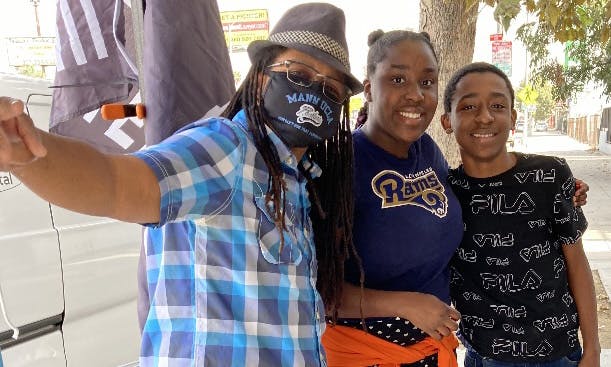
Marcus Van has been teaching for seventeen years, the last two at the Mann UCLA Community School in South Los Angeles. He believes greatly in education and his dedication to it. The pandemic has only reinforced that.
Van teaches seventh-grade English and English Language Development classes for grades 9–11, as well as eighth grade journalism.
When the schools shut down he recounts how they were quickly assembling packets of materials, photocopying, making sure all of his kids had what they needed for a break in their routine, all while calming the unsettled nerves. “We had hand sanitizer everywhere,” Van said. “No one knew what was going to happen. We didn’t know about this new coronavirus. It was a lot for the kids, but we all thought we would be back within a month or so.”
The time away from school stretched on; days turned into weeks; weeks into months, adding stress and challenge to a community already steeped in it.
“At the beginning everyone was still kind of like, ‘OK, this is new.’ Then it was, ‘this is bad, but we have to do it for a couple months, but we’re coming back after the summer, right?’ And then when it turns into ‘no, we’re not coming back after the summer.’ OK, first semester, all right, all right; then it was, ‘OK, we’re coming back for spring.’ But it continued to draw out and we literally have no idea whether we are coming back or not this year,” Van said.
Van says that at first the hardest thing was getting kids online. Some students did not have devices or the ones they did have were broken. Many students did not have reliable internet access. His school took action. “Mann UCLA leadership and administration did an incredible job getting resources to the kids. Like many schools, we had to make sure we had enough devices for students on such short notice. We collaborated with the district to get more chromebooks and mobile hotspots for internet access. We worked hard to meet the needs of all students in the midst of uncertainty.” Van also experienced a lot of resistance. Students became despondent, some did not want to participate, let alone turn on their cameras. But like other educators, he persisted, reaching out to his students by text, email, contacting parents and making sure they had the necessary means to participate.
Over time, Van’s concerns shifted. “I was concerned about the kids; I wasn’t so much concerned about ‘assignments.’ I was concerned about engagement; about kids showing up.”
As an English teacher, he uses games in his teaching methods and figured out a way to continue that in online instruction. He also tried to make assignments bite-size and accessible. He says he originally had high expectations for his students but realized this was not the time to pressure them to complete assignments. He wanted to provide quality instruction and engagement instead of overloading his students with work.
“What this whole pandemic has made me do is try to dial back a bit. I can’t give two assignments a week like I wanted to. Sometimes I can’t even give one. I don’t give homework. I exclusively make all my work classwork.”
One thing that has helped, Van says, is the support of “teaching interns,” undergrad students from UCLA, who have worked with his students individually or in small groups online.
“These interns have been a great resource. It’s people power. In my mind that’s what we need. We need armies of individuals to help kids. It shouldn’t be one teacher and 40 kids.”
As students return, Van thinks schools will also need to be ready to expand mental health services and counseling and restorative practices. “The kids are going to be coming back raw. Their relationships are going to be very intense in the first few months [when we return]. I think eventually they will adjust, but we are going to need counselors and restorative practices.”
Van is also very aware of the stress the pandemic has placed on teachers, including himself, and has made taking care of his own health during the pandemic a priority. “I’m doing more physical activity. I basically get into the mountains. Because once you’ve climbed three miles up, you’re not really feeling that angry or stressed. You just give in to the mountain. And then by the end, you’re coming down and you’re like, look at the trees and the sky.” And he is determined not to get COVID.
“You know the show the ‘Walking Dead’? I think they are in season 10 or 12 or something. I’m going to be on season 20, OK? I will be surviving the zombie apocalypse.”
“We’re All Trying the Best We Can”
Nhung Ha, Charnock Road Elementary School
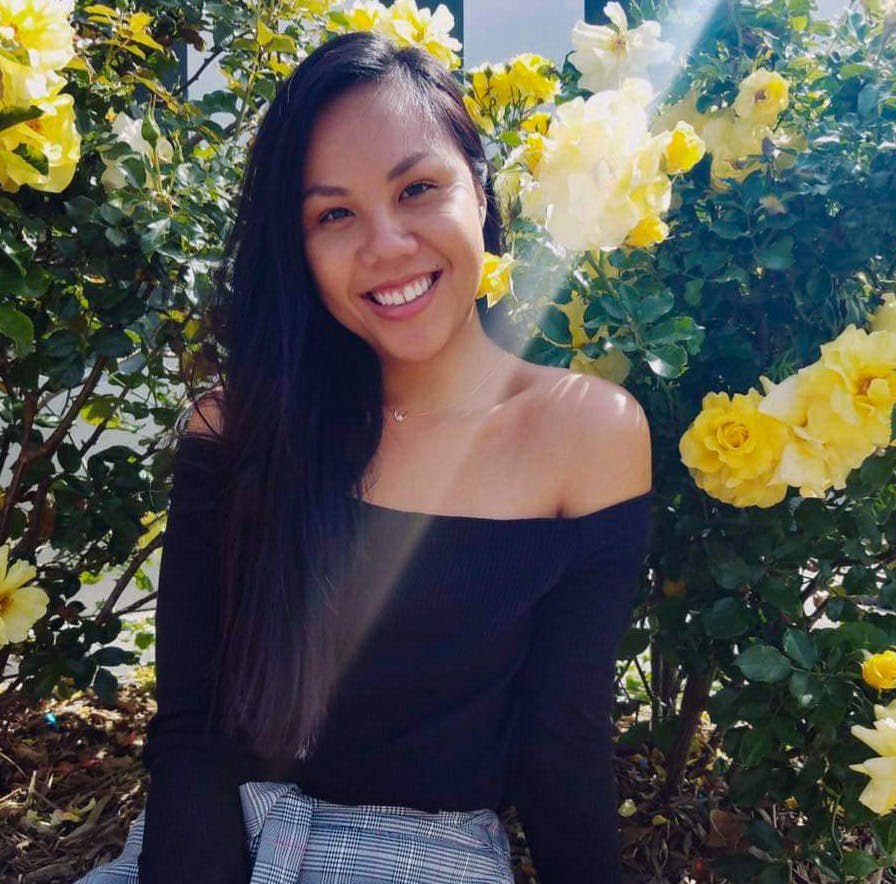
The UCLA Teacher Education Program does a lot to prepare students to work as teachers in urban schools, but raising money for the funeral of a student’s grandmother who died of COVID probably wasn’t part of the curriculum.
But that is the situation Nhung Ha found herself in last year during the pandemic.
A second-year student in UCLA TEP, Ha was just beginning her career in education, working as a fifth-grade teacher at Charnock Road Elementary School in Culver City. Charnock is a Title I school where the students are almost all Latinx or Southeast Asian, and more than 80 percent qualify for free and reduced lunch.
When the pandemic forced schools to close, amidst making academic/instructional preparations, Ha was particularly concerned about some of her students who were homeless.
“I had two who were houseless— they lived in a van at a nearby park. My biggest concern was how they were going to get food, because they usually grabbed lunch and we gave them extras as well. I also had one student who didn’t have the greatest home situation; there were some concerns about physical abuse. She was really scared and came to me crying as well. There was a lot of chaos in terms of a small handful of students who were nervous about their home situations.”
That March, Ha’s students were in the middle of a major inquiry project for fifth grade. She did not know how they would continue to work on the projects away from school. She also was not sure how she would be able to communicate with them.
Highlighted quote: “I wanted to make this the safest, most loving and calming environment for my students. We did a lot of community building and writing assignments and a lot of games too. It opened them up a lot more.”
“The UCLA Teacher Education Program does a lot to prepare students to work as teachers in urban schools, but raising money for the funeral of a student’s grandmother who died of COVID probably wasn’t part of the curriculum.”
“It was just very stressful. I didn’t know how to process it and what to do,” she explains. “I just sat and kind of reflected, ‘What will work?’ And then the next day I called every single student’s home and I talked to them just to see how they’re doing and then their parents as well.”
Over the next weeks Ha was able to reach most of her students by phone, but many were not able to access the internet and were not able to participate in Zoom and other activities. The school was still working to provide hotspots and devices to students and families.
Ha’s own situation for teaching from home was also challenging.
“I was working in my bedroom, and it was very cramped. I live with roommates, so it was not quiet. And my internet access was not the greatest.”
By mid-April, she’d figured out Zoom and had been able to reach most of her students, many of whom who were using their parents’ phones to participate. Each morning they would do a math block, English language arts block and work on writing.
“It was kind of like school again. They really looked forward to that after not having school,” Ha said. She adapted fairly quickly to teaching online.
“I think I’m lucky because I’m OK with technology. It wasn’t too bad because the kids already knew how to use Google Classroom. The difficult part was to teach them how to use Google Slides, Docs and all of that, because we didn’t really need that in the classroom. I was just teaching students how to navigate this new reality that we were in.” Ha said it also helped that they already had a strong community in the classroom.
When they were on Zoom, the kids were not shy. The webcams were on and the kids were able to communicate and knew how to work alongside each other.
As the school year drew to a close, as if the pandemic was not enough, the nation was also rocked by the murder of George Floyd in Minneapolis at the hands of police, and civic protest against police violence fomenting racial tensions. Over the summer, Ha and colleagues took part in Restorative Justice workshops and made plans for the coming year to incorporate its teachings in their classrooms.
Now a graduate of the UCLA TEP program, Ha explained that “I wanted to make this the safest, most loving and calming environment for my students. We did a lot of community building and writing assignments and a lot of games too. It opened them up to a lot more.”
As the school year has continued, Ha has found that her students are very interested in working together and taking part in “hands-on” projects. Her students were interested in the Mars landing, and they built Mars Rovers using household objects and Legos. She has also had parents serve as guest speakers, including one student’s dad, a software engineer, who worked on the Helicopter that was tested this spring with the Mars Rover and another whose Grandpa was part of the Black Panthers in the 1960s.
But teaching has not been without its emotional challenges.
Ha has had two students in her classroom with family members who died from COVID. One student lost three members of her family between November and January: her grandmother, her aunt and her cousin. “One day she just messaged me privately, ‘Can we talk in the breakout room?’ It was her and her mom crying, telling me that her grandma just passed away from COVID and they would not be in school for the next day. I asked if they needed anything and was able to put together a Go Fund Me page with the teachers at our school, raising $1,050 for the funeral.”
Ha could not have imagined starting her teaching career in a pandemic but is grateful for the preparation UCLA Teacher Education Program provided that helped her to develop strong pedagogies and a keen sense of social justice.
“It’s taught me my values as a teacher, and made me the teacher who I am,” she said.
“I think the biggest thing to remember is that we’re all trying our best. Not just us as teachers, but, oh my good ness, [all] students are trying their best. And that’s enough.” She is looking forward to being with her students in per son again.
“I’m hopeful for kids just to be kids again; to get to see them; to interact. It’s the little moments, when I catch them hanging out with one another during recess, the teasing back and forth, the relationships. I’m hopeful for that.”
This article is part of the UCLA Ed&IS Magazine Summer 2021 Issue. To read the full issue click here.
